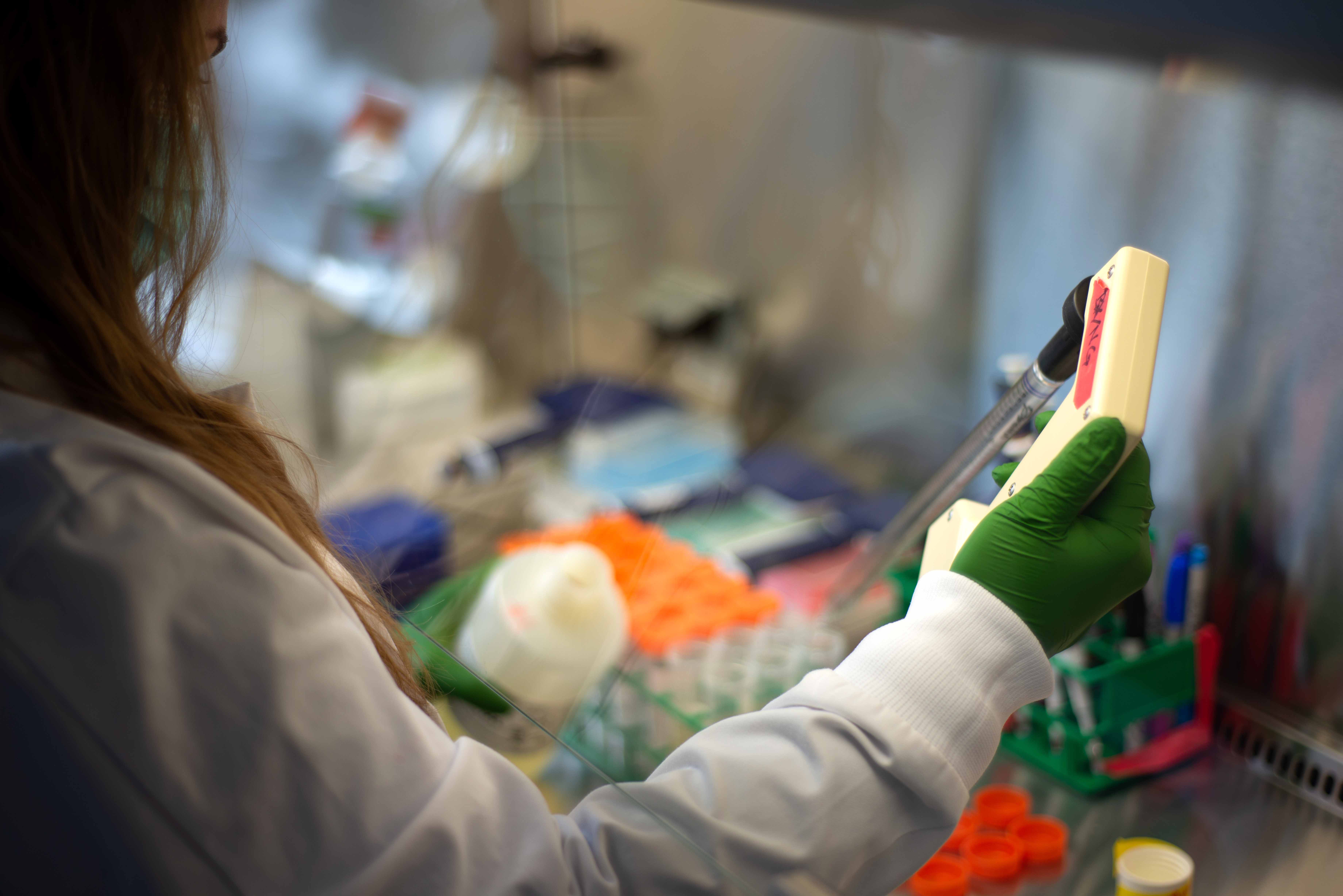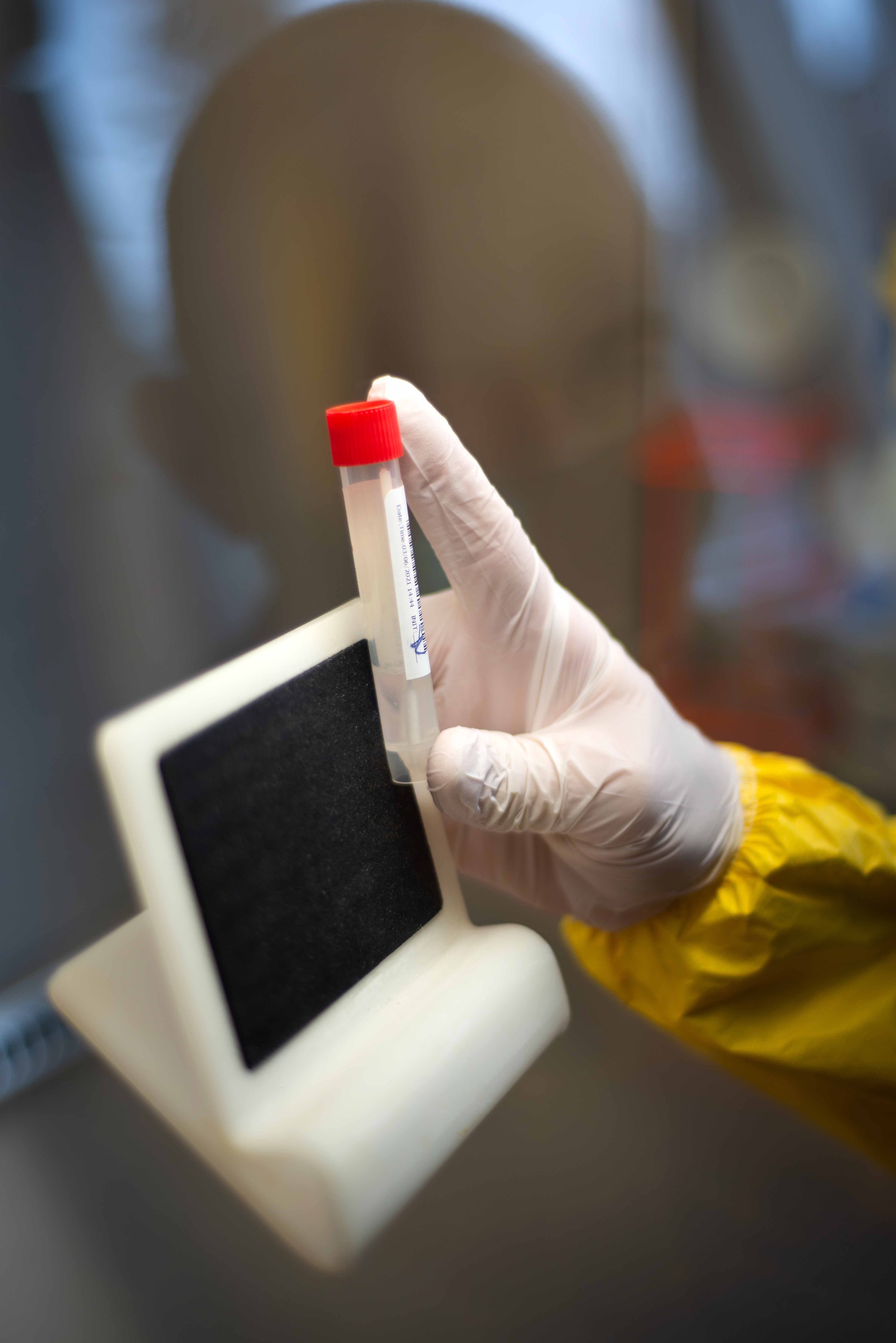U of I and INBRE Researchers to Study Coronavirus Variants
July 29, 2021COVID-19 test lab technician Ashalynn Bilton-Smith prepares test tubes for samples.

The Idaho INBRE higher education network and the University of Idaho will sequence COVID-19 samples and study coronavirus variants in the Moscow population in hopes of preparing for and preventing future outbreaks thanks to a $737,000 grant from National Institutes of Health.
Researchers will conduct viral genomic sequence analyses to identify variants of the virus and link them to travel patterns, outbreak events and demographic groups in Idaho. Coronavirus variants, especially those that could render vaccines ineffective, are a global concern.
“We’ve already seen mutants (on a national scale) that are more transmissible and result in more hospitalizations, which is concerning,†said Institute of Interdisciplinary Data Sciences (IIDS) Director Barrie Robison, project lead for the study.
The Idaho Public Health North Central District has identified 22 Latah County cases as variants, including the Alpha, Epsilon and Gamma variants, with the possibility of more variants that have not been tracked.
U of I’s COVID-19 testing lab staff had the foresight to preserve positive samples. The repository is one of the few in the state. Researchers will use those samples to learn more about the virus and possibly identify more variants.
Principal Investigator and Idaho INBRE Director Carolyn Hovde Bohach said the grant is all about preparing for what is coming.
“As long as people are getting sick, the virus is going to continue to produce variants,†she said.
Moscow’s population is unique because it features a static rural community with a mobile student sub-population, and it includes an unbiased sampling from mandatory testing of U of I students. Rural North Idaho, a critical missing piece of the state’s sequencing database, is a mostly stationary group.
“Superimposed on that group, we have the university population of primarily younger people who were travelling,†Bohach said. “And within that traveling population, we have mandated testing, which removes all bias.â€
Emphasizing the importance of the project, Robison said, “there’s not a lot of variant data from rural states with medically underserved communities such as Idaho.†He said looking back is necessary to prepare for the future.
“If a new mutant shows up, anything we can understand about the dynamics of strain invasion will be important,†he said.
 The IIDS Genomics and Bioinformatics Resources Core (GBRC), which will provide staff and infrastructure for sequencing variants, is the legacy of 20 years of NIH investment through the INBRE and Centers of Biological Research Excellence (COBRE) funding mechanisms. It is now independent from NIH direct support.
The IIDS Genomics and Bioinformatics Resources Core (GBRC), which will provide staff and infrastructure for sequencing variants, is the legacy of 20 years of NIH investment through the INBRE and Centers of Biological Research Excellence (COBRE) funding mechanisms. It is now independent from NIH direct support.
“Because of 20 years of investment, we were ready to compete for this money and help Idahoans be part of the solution,†Bohach said.
When called on by U of I President Scott Green last summer, the GBRC coordinated with Gritman Medical Center to set up a testing lab for the university and the public.
“The partnership we crafted with Gritman was really important in setting us up to analyze these sequences,†Robison said. “Other universities have asked us how we set up and executed our testing program, and President Green points to that partnership.â€
The funding for this project is supported by the institute of General Medical Sciences of the National Institutes of Health under award number P20GM103408. 100% of $737,106 total project costs are financed with federal money. The content is solely the responsibility of the authors and does not necessarily represent the official views of the National Institutes of Health.
Article and photos by Katy Riendeau
IBEST Design & Marketing Coordinator